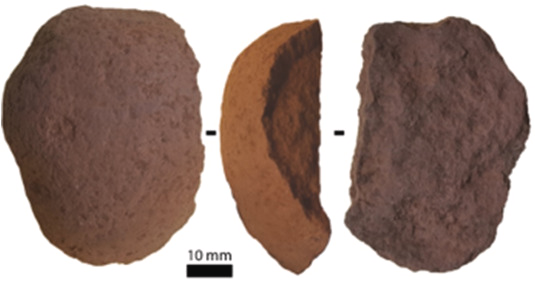A scientific report has been published on the archaeological significance of the Juukan 2 rock shelter, four years after it was destroyed to make way for mining. We will never know what treasures were remaining to be found at the shelter, but the study of the items extracted previously gives some idea of how much the site could tell.
In 2013, ministerial approval was granted for mining company Rio Tinto to destroy Juukan Gorge to get at more of the Hamersley Plateau’s vast resources of iron ore. The next year, two sites in the Gorge, known as Juukan 1 and 2, were found to contain evidence of human visitation dating back 46,000 years. This included thousands of artifacts from the last 28,000 years, when the site was inhabited more frequently.
Neither Western Australian nor national legislation allowed for the approval to be reversed in light of the new information. Rio Tinto wasn’t about to pass up the profits available and blew up the gorge in May 2020, In the meantime, archaeologists continued to analyze the previously collected items, leading to the new publication showing just how rich Juukan 2 was.
The new paper pushes the date at which Juukan 2 was first visited by people back a further thousand years and provides much more detail on the lives of the people who used it in that time.
“Late Pleistocene populations utilised a diverse range of tool technologies, including bone points, grindstones, and flaked stone artefacts. Palaeoclimatic conditions at Juukan 2 rockshelter varied greatly over the past 47 [thousand years], with repeated site visits by people, including during the peak hyper-arid phase of the Last Glacial Maximum (LGM)” the authors write. “Ancient starch analyses of the ground stone artefacts show the processing of Ipomoea (Bush Potato) from around 42 [thousand years ago] to the present day.”
Part of Juukan Gorge’s significance is that the two shelters were the only known Australian sites that carried evidence of continued occupation through the last ice age that were not near the coast. Nevertheless, use appears to have been sparce until the climate warmed up, and much of the continental shelf further north was overwhelmed by rising seas.
Artifacts at Juukan 2 from the last 3,500 years are much more abundant than older ones, to an extent that is unlikely to reflect better preservation alone, according to the new research. One item is thought to have been part of a hair belt. DNA from the part of a suspected hair belt shows the people who used the site 3,500 years ago were closely related to the Puutu Kunti Kurrama and Pinikura peoples who live in the area currently.
It’s not surprising the cave was only used occasionally, given how harsh the environment would have been during the Ice Age. The Pilbara is a hard place to live today, being very hot and dry. Nevertheless, it experiences a wet season, and water holes in gorges like Juukan can last. Juukan 2 is near Purlykuti Creek. Although not always filled with water, this is the best watercourse for 75 kilometers (44 miles).
Before 15,000 years ago, the authors write, there had not been a seasonal monsoon for a long time, making water much scarcer. The fact the site was occupied at all during this time is a testimony to the survival capacities of the inhabitants.
Nevertheless, Juukan Gorge must have offered more in the way of water and food than other sites in the Hamersley range, many of which appear to have been almost entirely unoccupied between 31,000 and 14,000 years ago.
More than 7,000 stone artifacts were found at the site, one of the largest assemblages in Australia, and they provide a chronology of changing tool use over time. An even larger number of bones from prey species were identified, mostly from small mammals. Echidnas were the most heavily represented species, despite being very rare at archaeological sites elsewhere in Australia. Rich pollen records reveal the changing climate.
A small number of grinding stones were found at Juukan Gorge, including this one on which 21 starch grains were found, revealing long term use of Ipomoea (bush potato).
Since only the largest of the four chambers in Juukan 2’s cave system had been extensively excavated, and that incompletely, there was much more to be found at the site. Exploration to see if anything survived the demolition began in 2022 under the guidance of the Traditional Owners. The paper implies that these efforts have met with some success, indicating that results will be presented in a future paper, but the world will have to wait for publication to find out more.
Rio Tinto’s long history in regard to mining operations on lands of cultural and historical significance to Indigenous people led them to believe they could destroy Juukan Gorge with little consequence. Instead, such a significant site was a step too far. The backlash was so strong and widespread, the company initiated an inquiry and the CEO at the time of the decision, along with two other executives, resigned after its findings were published.
The study is open access in Quaternary Science Reviews.
Source Link: Mining Blast Destroyed Exceptional 47,000-Year Record Of Aboriginal History, First Analysis Confirms
